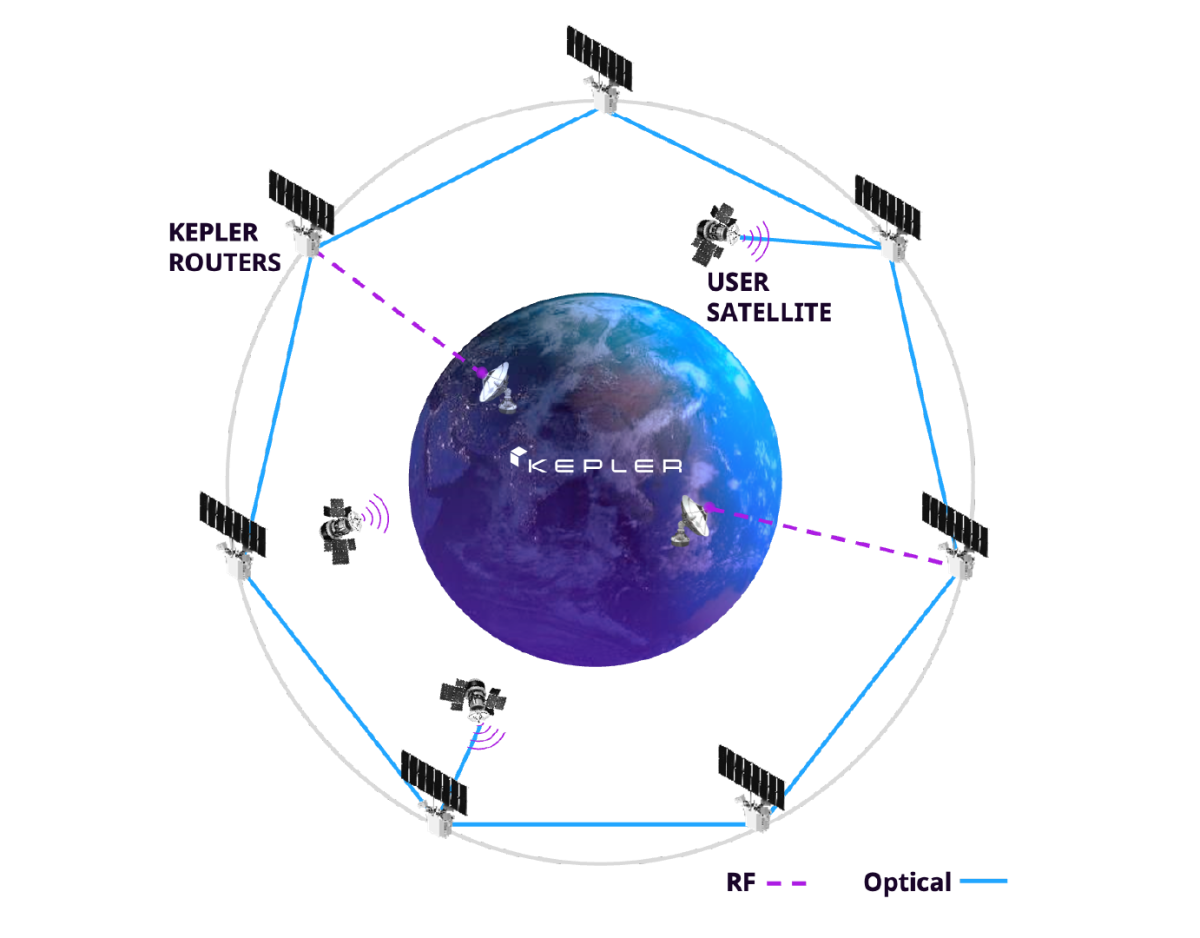TAMPA, Fla. — Kepler Communications has successfully tested optical inter-satellite links between a pair of data relay prototypes in low Earth orbit (LEO), the Canadian operator announced June 11.
Mina Mitry, Kepler’s CEO, said the company moved terabytes of data across two pathfinders over testing scenarios ranging from seconds to hours to mimic expected customer behavior.
The prototypes are equipped with the capability to individually adjust orbit to demonstrate the link dynamics that a customer satellite may experience, Mitry added. They are also roughly the same size as operational spacecraft in the company’s proposed relay constellation, called The Kepler Network, with a mass of a few hundred kilograms each.
The inter-satellite links adhered to optical communications standards developed by the U.S. Space Development Agency, according to Kepler, and used SDA-compatible optical user terminals.
Mitry said SDA compatibility will be important for supporting a broad range of potential customers. Kepler has also been expanding its presence in the United States amid talks to sell its proposed relay services to government agencies.
Starting next year, Kepler plans to deploy data relay satellites along two near-orthogonal planes in sun-synchronous orbits to keep line of sight with LEO spacecraft.
The relay satellites are designed to provide real-time connectivity for LEO satellites that can only relay data while passing over an approved ground station.
Kepler said it also demonstrated Internet Protocol (IP) mesh networking during the tests by communicating with both prototypes in real time over a single ground link.
Mitry said work has already started at Kepler’s Toronto factory to produce 10 data relay satellites under Tranche 1, enough for initial optical services slated for before the end of 2025, including one in-orbit spare.
“We have two Tranches planned for full LEO coverage,” he said, “but our architecture is scalable to market demand.”
Kepler is also part of a group bidding for a European Space Agency mission to demonstrate a relay network in LEO that can extend the reach of fiber networks on the ground.
The Canadian company currently operates 21 much smaller satellites in sun-synchronous orbits that use radio frequencies to provide low-data-rate connectivity for remote devices. Most of these satellites are the size of six cubesats, a standard form factor measuring 10 centimeters on each side.
While Kepler is currently focused on expanding its optical technology, Mitry said the company intends to continue customer support for its radio frequency services through current and future satellites.
